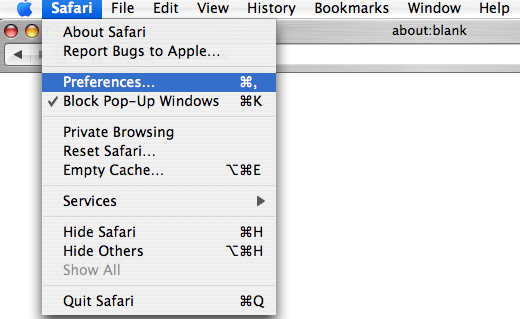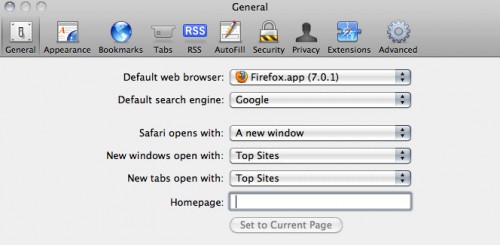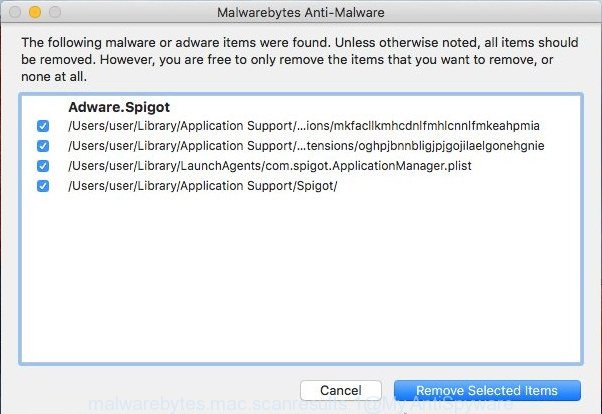InetWebSearch is a potentially unwanted program (PUP) that belongs to the category of Adware. Adware is form of malware that shows unwanted advertising on a MAC , redirects search requests to advertising webpages and collects confidential data for marketing purposes. InetWebSearch can show banner advertisements, full-screen ads, popups, videos, or other varieties of online advertising. Adware software can attack your computer’s browsers such as the Mozilla Firefox, Google Chrome and Safari. Maybe you approve the idea that the ads or popups is just a small problem. But these annoying ads eat Apple Mac resources and slow down your Apple Mac performance.

Unwanted ads
The worst is, adware can gather marketing-type data about you to get profit. The InetWebSearch adware can analyze your browsing, and gain access to your sensitive information and, subsequently, can transfer it third party companies. Thus, there are more than enough reasons to remove adware software from your MAC.
Adware software is usually written in ways common to malicious software, spyware and hijacker infections. In order to remove InetWebSearch and thus get rid of unwanted ads, you will need complete the steps below or use free adware removal utility listed below.
How does InetWebSearch get on your MAC system
Usually, adware gets into your MAC OS as part of a bundle with free programs, sharing files and other unsafe applications that you downloaded from the Internet. The authors of adware pays software creators for distributing adware within their software. So, third-party applications is often included as part of the setup file. In order to avoid the install of any adware software: select only Manual, Custom or Advanced installation type and disable all third-party software in which you are unsure.
Threat Summary
| Name | InetWebSearch, Inet Web Search 1.0 app |
| Type | adware, PUP (potentially unwanted program), pop up ads, pop-ups, pop-up virus |
| Symptoms |
|
| Removal | InetWebSearch removal guide |
How to Remove InetWebSearch (removal steps)
In the step-by-step guide below we will have a look at the adware and how to get rid of InetWebSearch ads from Safari, Firefox and Chrome internet browsers for Apple Mac, natively or by using a few free removal tools. Certain of the steps below will require you to shut down this web-page. So, please read the steps carefully, after that bookmark it or open it on your smartphone for later reference.
To remove InetWebSearch, perform the steps below:
- How to manually remove InetWebSearch
- Automatic Removal of InetWebSearch adware
- How to stay safe online
- Finish words
How to manually remove InetWebSearch
First of all, try to remove InetWebSearch manually; to do this, follow the steps below. Of course, manual removal of adware requires more time and may not be suitable for those who are poorly versed in system settings. In this case, we suggest that you scroll down to the section that describes how to delete InetWebSearch adware using free tools.
Remove InetWebSearch associated software by using the Finder
First method for manual adware removal is to go into the Finder, then Applications. Take a look at the list of programs on your computer and see if there are any dubious and unknown apps. If you see any, you need to remove them. Of course, before doing so, you can do an Internet search to find details on the application. If it is a potentially unwanted application, adware or malicious software, you will likely find information that says so.

- Open the Finder.
- Click “Applications”.
- It will show a list of all software installed on the Apple Mac.
- Scroll through the all list, and remove questionable and unknown apps. Pay maximum attention to the program you installed last.
- Drag the questionable program from the Applications folder to the Trash.
- Empty Trash.
Remove InetWebSearch from Firefox by resetting browser settings
If Mozilla Firefox settings are hijacked by the InetWebSearch adware, your internet browser displays undesired pop up advertisements, then ‘Reset Firefox’ could solve these problems. However, your themes, bookmarks, history, passwords, and web form auto-fill information will not be deleted.
Press the Menu button (looks like three horizontal lines), and click the blue Help icon located at the bottom of the drop down menu like the one below.

A small menu will appear, click the “Troubleshooting Information”. On this page, click “Refresh Firefox” button as displayed on the image below.

Follow the onscreen procedure to return your Firefox internet browser settings to their default values.
Remove InetWebSearch adware from Chrome
Reset Google Chrome will help you to remove InetWebSearch ads from your internet browser as well as to restore browser settings hijacked by adware software. All unwanted, malicious and adware plugins will also be deleted from the browser. When using the reset feature, your personal information such as passwords, bookmarks, browsing history and web form auto-fill data will be saved.
First start the Google Chrome. Next, press the button in the form of three horizontal dots (![]() ).
).
It will display the Chrome menu. Select More Tools, then click Extensions. Carefully browse through the list of installed extensions. If the list has the addon signed with “Installed by enterprise policy” or “Installed by your administrator”, then complete the following guide: Remove Chrome extensions installed by enterprise policy.
Open the Chrome menu once again. Further, press the option named “Settings”.

The web-browser will show the settings screen. Another way to display the Google Chrome’s settings – type chrome://settings in the internet browser adress bar and press Enter
Scroll down to the bottom of the page and click the “Advanced” link. Now scroll down until the “Reset” section is visible, as displayed below and click the “Reset settings to their original defaults” button.

The Google Chrome will display the confirmation prompt as shown in the figure below.

You need to confirm your action, press the “Reset” button. The internet browser will run the task of cleaning. After it is complete, the web browser’s settings including startpage, newtab page and default search engine back to the values which have been when the Google Chrome was first installed on your Apple Mac.
Remove InetWebSearch adware from Safari
The Safari reset is great if your browser is hijacked by InetWebSearch or you have unwanted add-ons or toolbars on your internet browser, that installed by an malware.
Run Safari internet browser. Next, choose Preferences from the Safari menu.

First, click the “Security” tab. Here, select “Block pop-up windows”. It will stop some types of popups.
Now, click the “Extensions” icon. Look for suspicious add-ons on left panel, choose it, then press the “Uninstall” button. Most important to remove all suspicious extensions from Safari.
Once complete, check your startpage and search provider settings. Click “General” tab. Make sure that the “Homepage” field contains the website you want or is empty.

Make sure that the “Search engine” setting shows your preferred search provider. In some versions of Safari, this setting is in the “Search” tab.
Automatic Removal of InetWebSearch adware
If your computer is still affected with InetWebSearch adware software, then the best method of detection and removal is to use an anti malware scan on the MAC OS. Download free malicious software removal tools below and run a full system scan. It will allow you remove all components of the adware from hardisk and Windows registry.
How to automatically delete InetWebSearch with MalwareBytes Anti-Malware
If you are still having issues with the InetWebSearch adware removal or just wish to scan your MAC system occasionally for adware software and other malicious software, then download MalwareBytes Free. It is free for home use, and finds and deletes various unwanted apps that attacks your machine or degrades Apple Mac performance. MalwareBytes Free can get rid of hijacker, adware software, PUPs as well as malicious software, including ransomware and trojans.

Installing the MalwareBytes AntiMalware is simple. First you will need to download MalwareBytes Anti Malware (MBAM) on your MAC system by clicking on the following link.
20945 downloads
Author: Malwarebytes
Category: Security tools
Update: September 10, 2020
Once downloading is finished, run it and follow the prompts. Press the “Scan” button to perform a system scan with this utility for the InetWebSearch adware. This procedure can take quite a while, so please be patient. When a malware, adware or potentially unwanted software are detected, the number of the security threats will change accordingly. Next, you need to click “Remove Selected Items” button.
The MalwareBytes Free is a free application that you can use to get rid of all detected folders, files, malicious services and so on.
How to stay safe online
Using an ad-blocking program such as AdGuard is an effective way to alleviate the risks. Additionally, ad blocking applications will also protect you from harmful ads and webpages, and, of course, stop redirection chain to misleading and similar web-sites.

- Visit the page linked below to download AdGuard.
AdGuard for Mac download
3753 downloads
Author: © Adguard
Category: Security tools
Update: January 17, 2018
- When the download is complete, start the downloaded file. You will see the “Setup Wizard” program window. Follow the prompts.
- When the setup is complete, click “Skip” to close the setup program and use the default settings, or press “Get Started” to see an quick tutorial that will help you get to know AdGuard better.
- In most cases, the default settings are enough and you do not need to change anything. Each time, when you start your MAC, AdGuard will start automatically and stop unwanted ads, block harmful and misleading webpages.
Finish words
Now your MAC should be free of the InetWebSearch adware. We suggest that you keep AdGuard (to help you block unwanted ads and intrusive malicious web pages) and MalwareBytes Anti Malware (to periodically scan your machine for new adwares and other malware).
If you are still having problems while trying to get rid of InetWebSearch ads from the Chrome, Safari and Firefox, then ask for help here here.

















